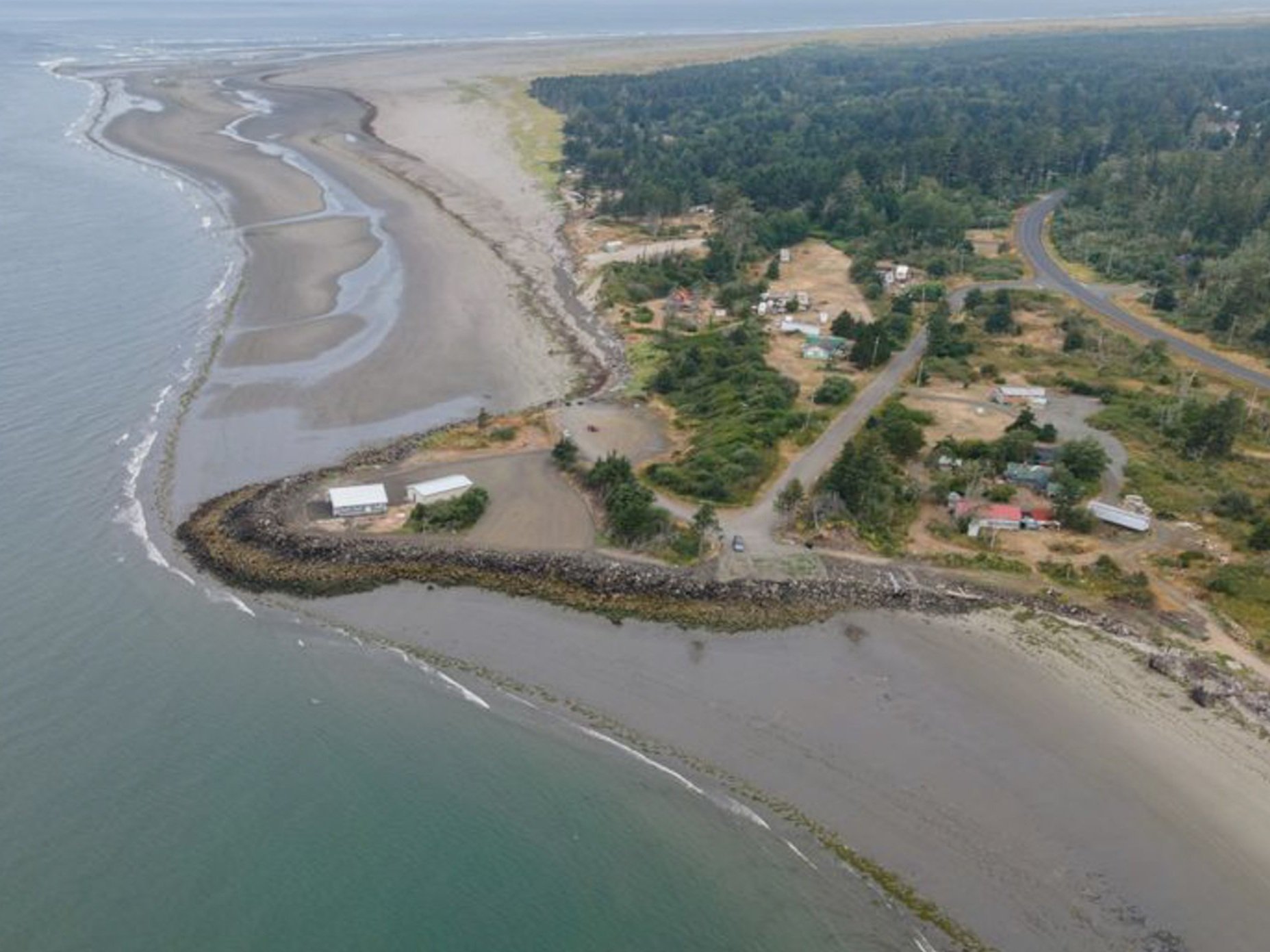Mission | Sea Walls | Berms | Gallery
Berms & Dunes
Beach dunes are generally taller than berms but not as wide. They can provide some protection, but the water behind the dunes can return to the ocean from the sides. Berms on the other hand act as speed bumps. They are not intended to block the waves, but they can help trap the sand from the waves. Waves come in carrying sand in and then back out to sea hundreds of times a day, thousands of times a week, hundreds of thousands of times a year. The sand goes in and then right back out, sometimes carrying more sand out than in. With a berm, the wave stumbles over it and loses some sand, then with less energy, it returns. Each time dropping sand and eventually burying the berm.

Washaway Beach Berms
Washaway Beach in North Cove, WA is a great example of a berm in action! In 2016, David Cottrell dropped $400 worth of rocks (one load) just to see what would happen. He sought to mimic the cobble beaches and basalt slides that are common in the Pacific Northwest. That experiment has since grown into a more than 2-kilometer-long berm of rocks and stumps that shift with the waves and collect sand, rebuilding the beach. By adding a berm, David Cottrell, essentially rebuilt the beach. He used natural debris to help capture sand from the waves. Over time, this property formed a peninsula! Efforts expanded with the help of the Washington Department of Ecology to preserve additional coastline in the area with similar techniques.
Galveston Barrier Island Sargassum (seaweed) Dunes
The Galveston Barrier Island Beach-Dune System showed that seabale-enhanced coastal dunes can provide superior resistance against erosion. This became apparent in experiments and in the analysis of tropical storm Bill impact on the field experiment dune. The benefits of seabales improved when combined with proper vegetation planting strategies. Vegetated dunes including seabales were able to develop strong root systems quicker than their counterparts. This may be linked to the moisture-retaining capabilities of the seabales and the time-release nutrient provision to the plants, making them more resistant to drought and nutrient shortage. The abundant dune vegetation supported by the seabales also captured a significant amount of wind-blown sediment which aided in fortification of the dune and continued accretion.
Constructing and restoring dunes with seabale cores provides a new beach management option for coastal areas. Specifically after large single Sargassum landings the process of compacting the wrack material and incorporating it into dunes provides both short-term (order of days and months) and long-term (order of years and longer) benefits.
Short-Term Benefits:- Removal of Sargassum wrack from the water line
- Unobstructed access for tourists and residents to the water
- Reduction of odor caused by decomposing trapped organic matter
- Reduction of Sargassum volume through compaction
- Increase in erosion resistance of dunes via dense, wave-energy absorbing seabales
- Vegetation growth and health from moisture retention and nutrient time-release
- Dune growth through repeated applications increased plant mass and captured wind-blown sediment
- Increase in dune resilience against erosion via improved plant root densities
The Galveston barrier island's beach-dune system protects lives and property against storm surge and wave attack. A healthy beach-dune system is the most economic and the most natural protection against extreme events. The key is to optimize dune restoration, keeping in mind local regulations, various stakeholder objectives and available material. Since sand is scarce on most parts of Galveston Island, the additional Sargassum material represents an innovative approach to reduce erosion and grow much needed coastal dunes.
New Jersey Shark River Coconut Berm
Coconut berms are being used along the shores of New Jersey's Shark River to reduce beach erosion in the area. These "living shorelines" are made from natural elements at a fraction of the cost of other materials.
The organic coconut berms are designed break down over time. But before it does, it can help rebuild the beach with shoreline plants and grasses.
2024 Copyright SaveOurCoastline.org. All rights reserved.
